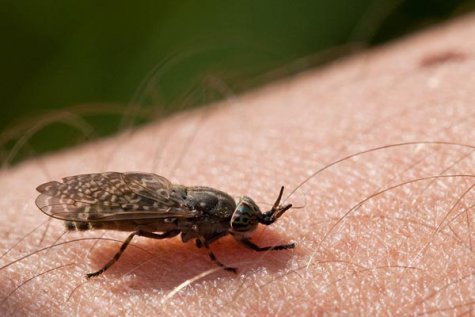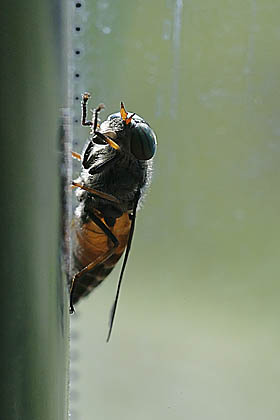Let's talk of horseflies while they are still about
Photos: Arne Ader
Translation: Liis
Horsefly
| Horsefly |
Parm |
Horseflies are like people on holidays – sunny weather and wind doesn’t bother these fliers. In contrast mosquitoes annoy you with their whining in the shade and calm weather and their sting is nearly not felt. Horseflies however bite quite painfully with their mandibles.
Male horseflies feed on nectar, the secretion of greenflies and tree sap and do so throughout the season. The menu of female horseflies is similar up to fertilization; after that they begin to such the blood of mammals, which is necessary for the development of the eggs. After egg-laying the female horseflies are again ready for sucking blood in order to lay new eggs.
When they suck blood toxic saliva can spread into the wound from the bite and of course we can’t know from whom the horsefly has sucked blood previously – thus horseflies are potential vectors of infections.
The larvae of horseflies live in water bodies, buried into the bottom mud, some species may swim in the surface water. The larvae are cigar-shaped and feed on smaller organisms a few species are herbivores. For pupation the pupae stage the fully grown larvae crawl up on land.
Horsefly on window
In the insect world horseflies count as long-lived – with luck a horsefly life may be three years.
Horseflies have beautiful, brightly coloured compound eyes and that is probably the one thing that we might like about them.
In Estonia more than 30 species of horseflies have been found; they are medium sized to large, two-winged flies, with body lengths of six to twenty-six millimetres, and transparent or greyish wings.










